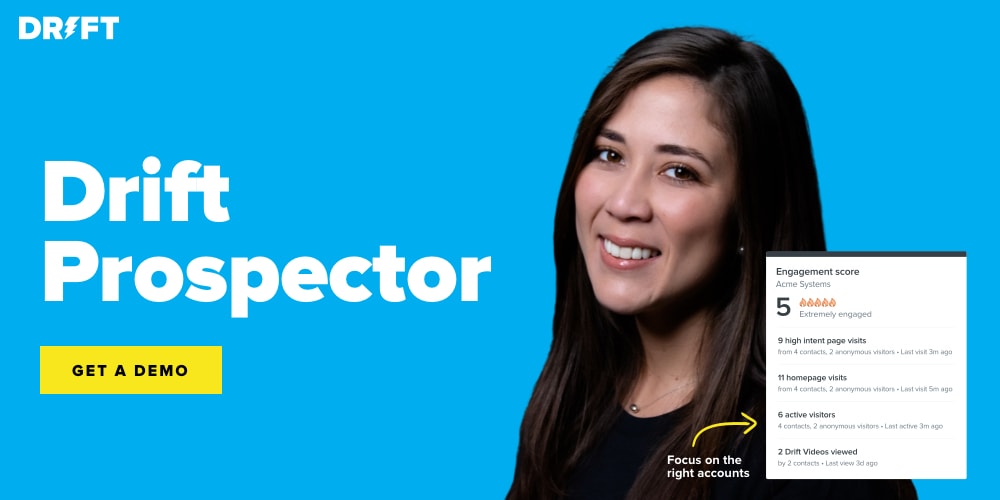
It’s an unusual time to be in sales, to say the least: Pressure to hit quotas is on the rise, we can’t collaborate from our desks, and generating pipeline has become even more difficult. It wasn’t the summer that most sales teams expected. But, great salespeople adapt to any circumstance.
And that includes how we manage ourselves within our team. Even with everyone working from their couches or kitchen tables, sales leaders need to make sure AEs and SDRs are aligned on mutual goals and understand what it’ll take to succeed. Here are three ways you can ensure a strong AE and SDR relationship and handoff 🤝
1. Account Alignment
One thing that I’ve always found interesting is that although AEs and SDRs work within the same territories, they tend to have extremely different opinions around which accounts present the greatest opportunities for pipeline generation. However, because of the current climate, it’s absolutely critical that AE and SDR pairs are tightly aligned on which accounts to pursue, when to pursue them, and why those specific accounts present the greatest opportunities for success.
Fortunately, technology can help get your team there. Your team might already have an ideal customer profile which should point you towards an account that your company is ready to talk to, but knowing the accounts in your ICP doesn’t necessarily point you towards companies that are ready to talk to you. While a company might be a great fit for your solution, they might have experienced a downsized team or reduced budgets, so they won’t be receptive to your outreach – even if it’s a work of art. But if we strategically combine buyer intent data and match it to ICP accounts, we can understand when the accounts we want to talk to are actually “in-market” and ready to talk to us!
SDRs and AEs, aligning yourselves with accounts in your ICP that are “in-market” will make it easier to march towards success. Even if you don’t have the ability to identify ICP accounts that are “in-market,” having an honest conversation around the accounts that BOTH AEs and SDRs are excited about pursuing will create alignment. An easy way to ensure this is to commit to weekly check-ins (actually commit to them and try not to deprioritize them for other tasks) to discuss your processes. AEs should emphasize the key pain points SDRs need to capture during prospecting, which can help you determine if an account is closer to buying.
2. Collaboration on Creative Strategies to Stand Out
As your team goes after prospects, AEs and SDRs should co-own the process. Nearly every highly productive AE:SDR team has a high level of collaboration in which both are working in tandem to attack the territory.
When creating a collaborative strategy, it’s really important that the SDR:AE pair sets realistic expectations around who can do what under the constraints of their bandwidth. For example, it doesn’t make sense to ask an AE to apply the same level of rigor to prospecting as an SDR because prospecting is not the only thing an AE is responsible for on a daily basis. Rather, setting realistic goals in terms of accounts and/or personas to pursue can be helpful.
For realistic prospecting goals, AEs can either:
- Pick a small subset of accounts to pursue and let their SDR’s own the rest
- Pick a certain persona (usually someone more senior) to pursue within a subset of accounts and have their SDR go after everyone else
So, build a co-owned cadence and get your AEs and SDRs bought in. Help them understand who they should reach out to and when they should do it. Part of that can include monitoring social media – which has been blowing up since buyers started working remotely. Keep an eye on relevant keywords or challenges buyers express and include those in your outreach cadence to inform and persuade potential buyers.
3. Coaching and Commitment to Best Practices
Any skill takes practice to improve. Securing new pipeline is just another skill, and helping your team be incredible means we need to be great coaches to teach them.
AEs are in an excellent position to support SDRs’ professional development, as they have a lot of experience worth sharing. As part of weekly check-ins, you can include specific feedback on how SDRs can improve their outreach and prospecting processes. For example, AEs and SDRs can listen to past calls together and note strengths and improvement areas. It’s a simple, but powerful way to deliver useful feedback.
For sales leaders, customers fill in the rest of the feedback loop by providing data on their experience with your team. You can incorporate their feedback into your best practices and then share that with AEs and SDRs. More experienced managers can walk newer salespeople through the “voice of the customer” and include the parts that matter the most to customers in their outreach.
Wrapping Up: Sales Is a Team Sport
Sales teams should always ensure everything they do emphasizes the team aspect. It might be easy for one person to claim a “win,” but sales teams are only truly successful when everyone collaborates. During a time when sales teams need to rely on each other for support more than ever, ensure your AEs and SDRs are clear on their roles and have the resources to improve themselves and help each other achieve their potential.
As the Sr. Director of Sales Development at 6sense, Ernest Owusu leverages his passion for helping others succeed as well as his insights from the field to foster a winning team. With previous experience as an NFL athlete, Ernest thrives in team environments full of high collaboration and healthy competition. Outside of the office, you’ll find him tackling the industry’s diversity problem by mentoring and empowering under-represented people so they can confidently grow their careers.








